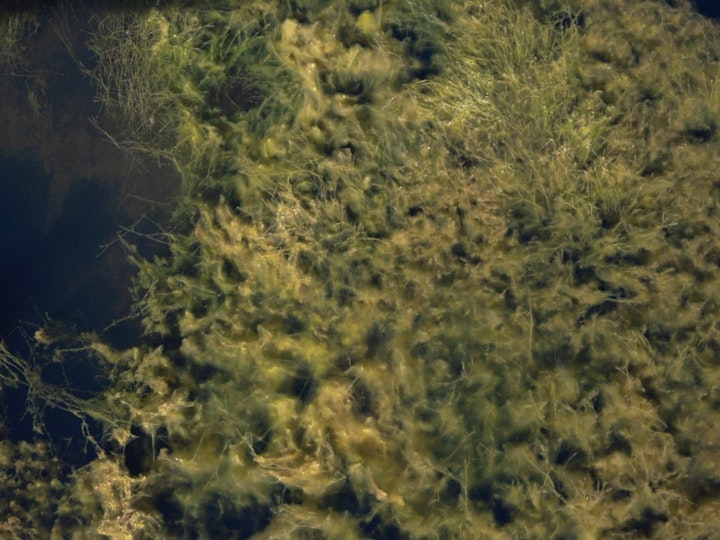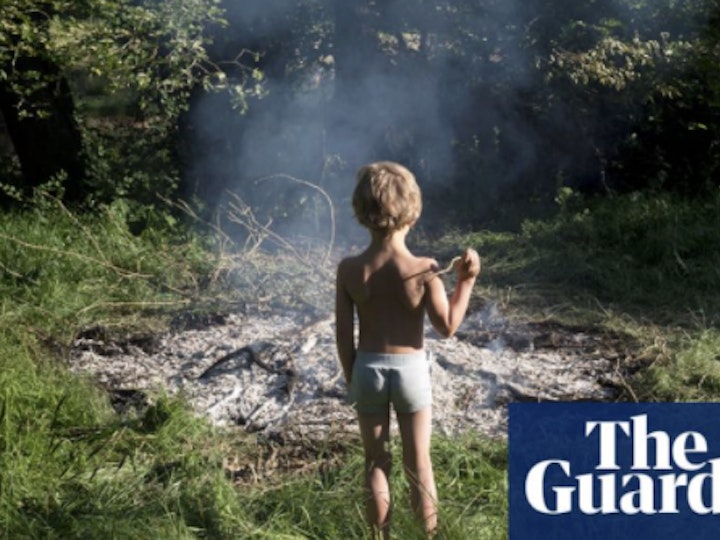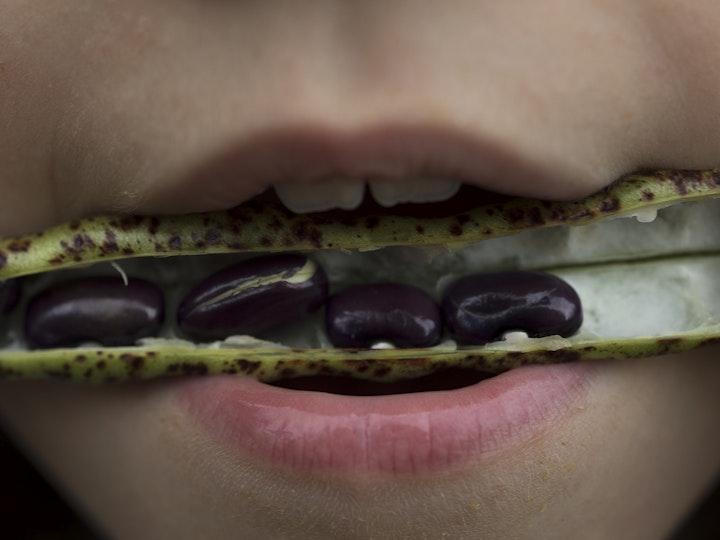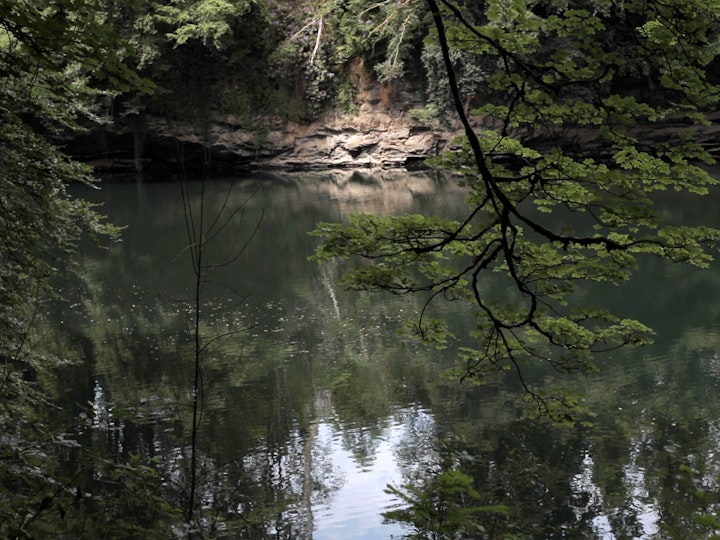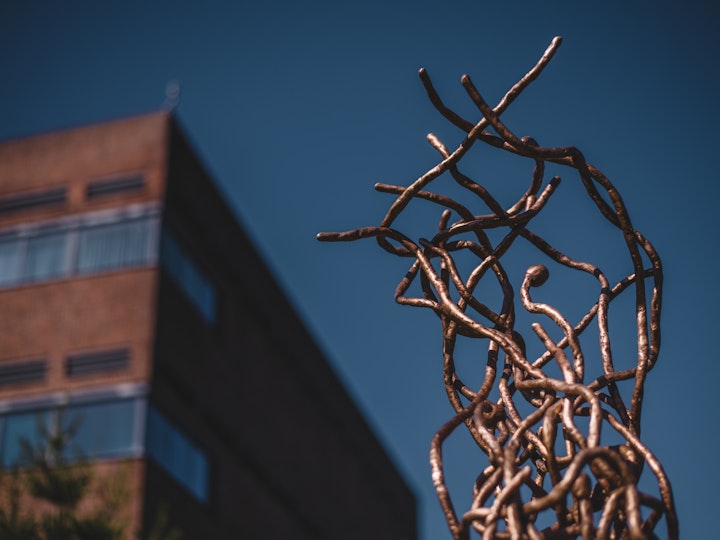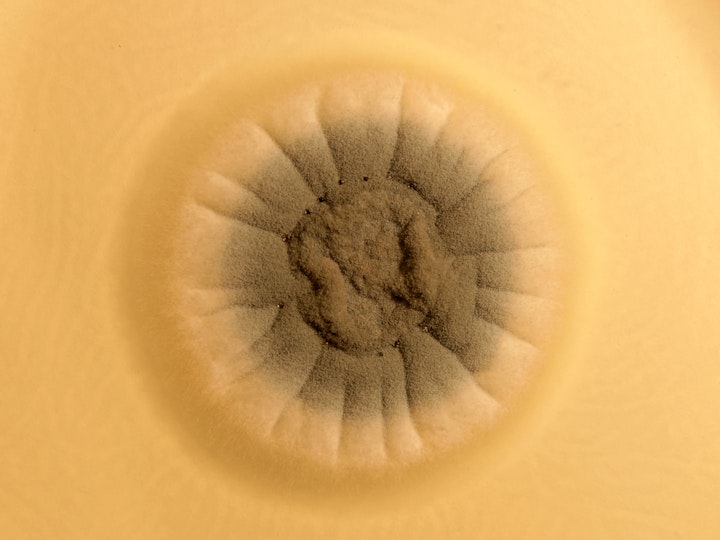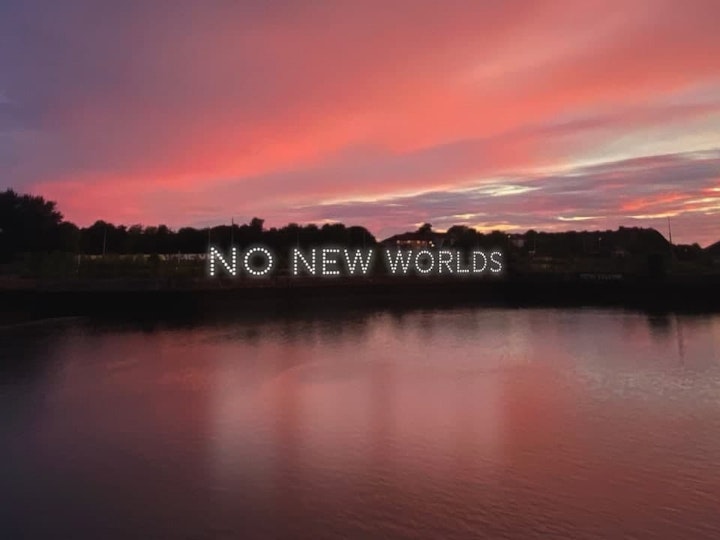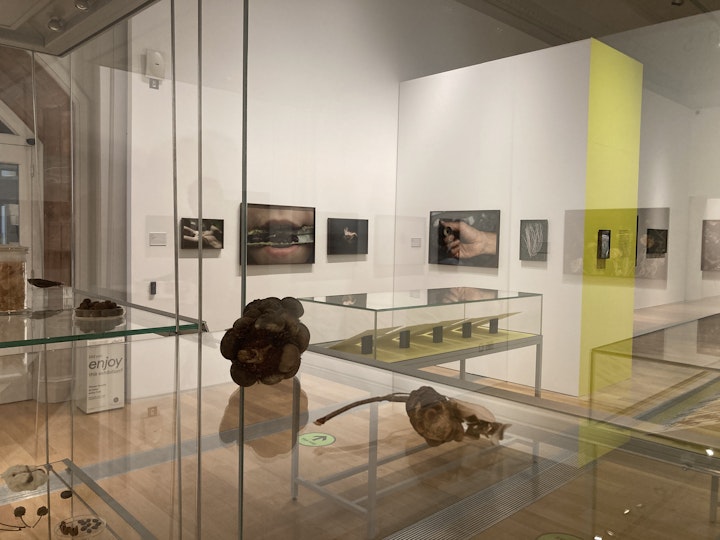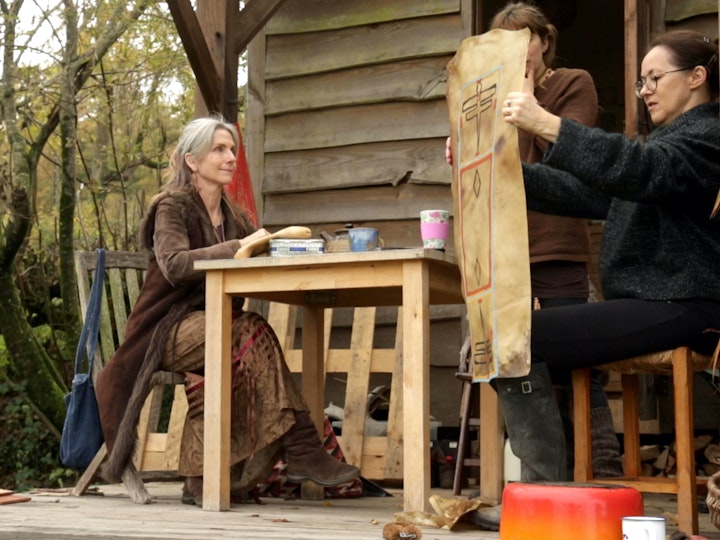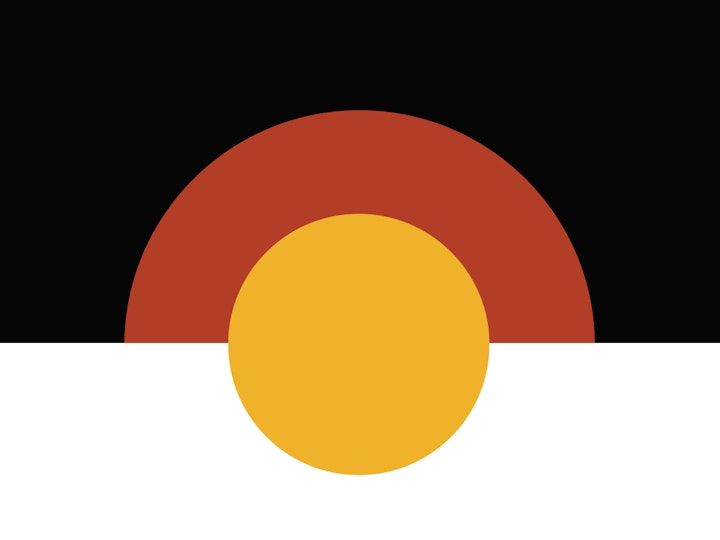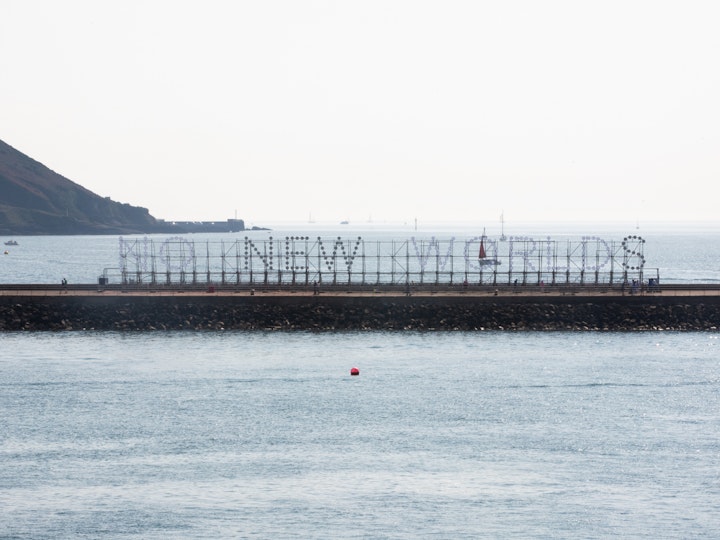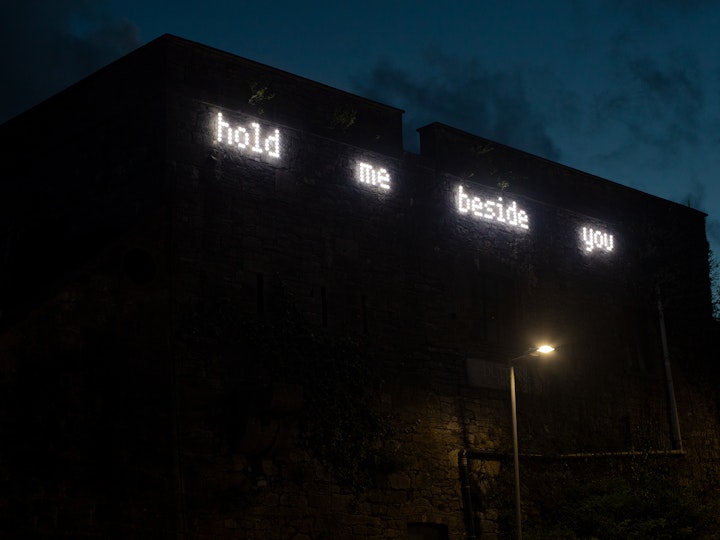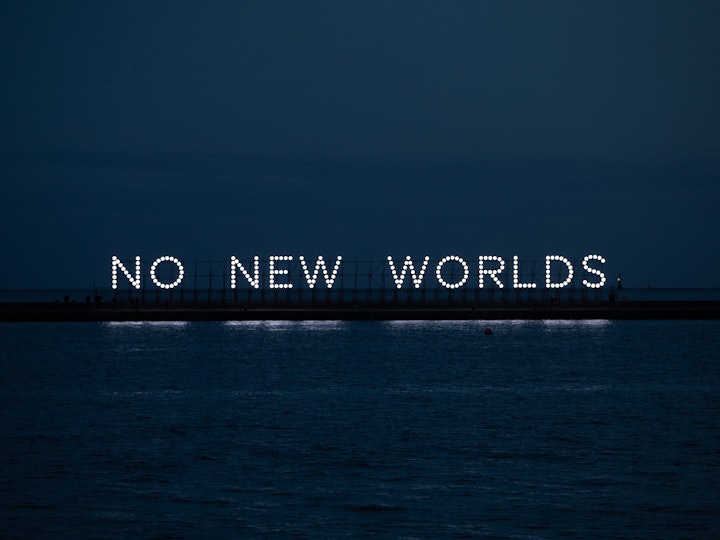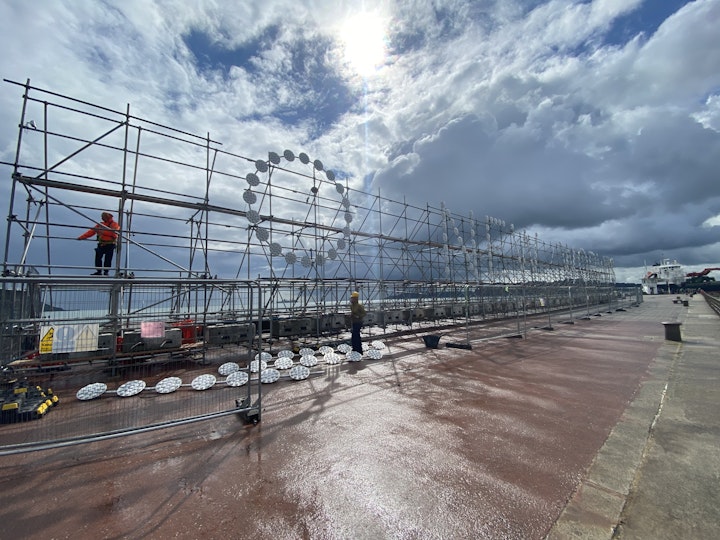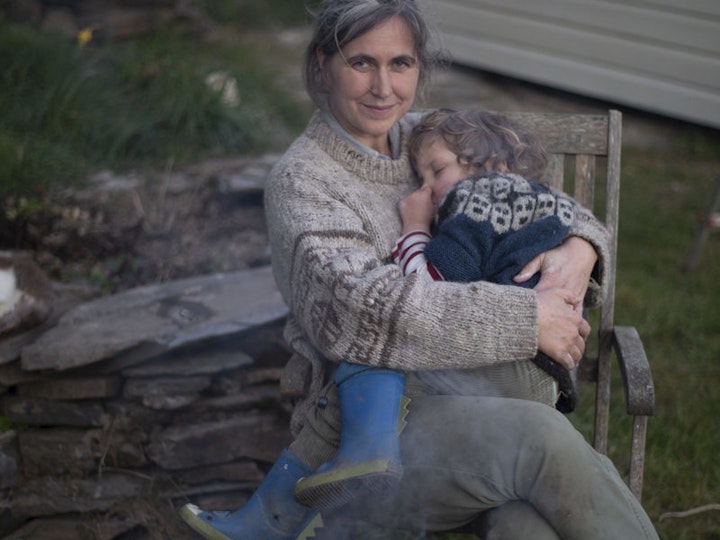
If we could play a fish’s otolith like a record – what stories of the sea would we hear?
Otolith – like humans, fish have ear bones called otoliths that help them to navigate, to know which way is up or down. What’s special about fish otoliths is that, like tree rings, a new ring is laid down every year. If we look at these otoliths under microscopes, or examine the minerals inside them, we discover that they hold lots of information. We can find out lots of things; how old a fish was, where it travelled, what it ate, and if it had times of stress. The otolith offers us a diary of a fish’s life. Looking at the beautiful microscope images of otoliths reminded me of records, and how the lines on them hold information, sounds, maybe memories. Imagine if we could play a fish’s otolith like a record – what stories of the sea would we hear? Would we hear about how they are having to travel further north because of warming seas? Would we hear about their encounters with plastic? Would we hear other creatures, machines or plants that share the ocean?
On our doorstep sits the Atlantic: gateway to all the World’s conjoined oceans and seas and home to an abundance of lifeforms; a liquid archive of history and witness to many arrivals, transits and departures.
Coming into the 400th anniversary year of the story of the sailing of the Mayflower, many of the key impacts of that voyage are themes still being felt globally today. Migrations, new terrains, fears of invasion and the importance of the preservation of environments and the sustainability of ways of life are echoed across the centuries, inflicted or suffered, over and over again.
These issues are mirrored in ocean science. In a time of climate emergency, we are witness to unprecedented migrations because of rising sea temperatures, the settling of new underwater territories by species that have never roamed as far north and the degradation of pristine environments through increasing salinity, plastic detritus and dredging. These horrors are not new, but instead represent the cumulative residue of the dominant minority’s lack of attention to the impact of our actions, of our consumption and waste and our blindness to the effects of these actions on our human and non-human companions.
How we make sense of this information, how we navigate a way towards a more attentive way of living are the questions I am tentatively wrangling with during this residency and my wider artistic research and practice. I am an artist mainly working with moving image and sound, whose work focusses upon the idea that we are now inhabiting a geological era dubbed the ‘Anthropocene’; a geological era where the Earth we stand upon and the seas surrounding it, are inscribed by mankind’s (Anthropos) activities. Carbon deposits laid down during the Industrial Revolution, radiated materials emanating from the first nuclear tests and plastics embedded in Arctic ices are all tokens of mankind’s impact upon the Earth.
I am interested in investigating the reverberations of the ‘Underwater Anthropocene’ in the World’s ‘One Ocean’, a view that perhaps we don’t normally consider, and of investigating many ways of knowing and learning to live in this era. The environmental and humanitarian violences unleashed by the sailings across the Atlantic continue to echo and wound and there are many stories today which speak to mankind’s continued inattention to the world around us or the over-consumption of a wealthy minority.
It seems to me that many communities, animals and plants already know how to live sustainably, and I hope, in this project, to explore some of these stories through listening. I will begin by listening to underwater stories, literally, by placing microphones in this realm, and listening to those experts who work with the plants, animals and organisms in this environment. Relating animal and plant stories to those of humans, journeys will be traced into, under and across the Atlantic. With the support of the National Marine Aquarium, Take A Part and Plymouth University’s Marine Institute, I will gather sounds of the Sound to create a visual and aural picture of this territory and some of the stories it contains.
With thanks to
Martin Hampton, Director of Photography
Thomas Daguerre, Underwater Footage produced by Hydromotion Media
Chris Muirhead and Ben Shepherd, DMS Vinyl
Clare Embling, Kate Fuller and Katherine Herborn, Plymouth University’s School of Biological & Marine Sciences
Maria Wild, Karen Vanstaen and Lisève Fierens, Centre for Environment, Fisheries and Aquaculture Science
Pete Bromley, Plymouth Fisheries, Sutton Harbour
Loveday Trinick, Mark Parry and Nicola Bridge, National Marine Aquarium
Kim Wide, Beth Richards, Rhys Morgan and Gem Smith, Take A Part
